As They Continue Questioning Her Tituba Admits That There Were People Who Came With the Deil
Tituba proved to be a fantastic orator as she talked her way out of slavery using the fear and mass hysteria of witchcraft that paralyzed the people of Salem.
Tituba arrived in Boston in 1680 to start her new life, though it was not much of one. She was a slave owned by Samuel Parris, a wealthy business owner who inherited a sugar plantation in Barbados.
Tituba's origins are unclear and relatively common for her time, and scholars believe that she may have been from the Arawak tribe of Venezuela before she was either sold or born into slavery. Indeed, without the Salem Witch Trials, history would have never known about Tituba at all.
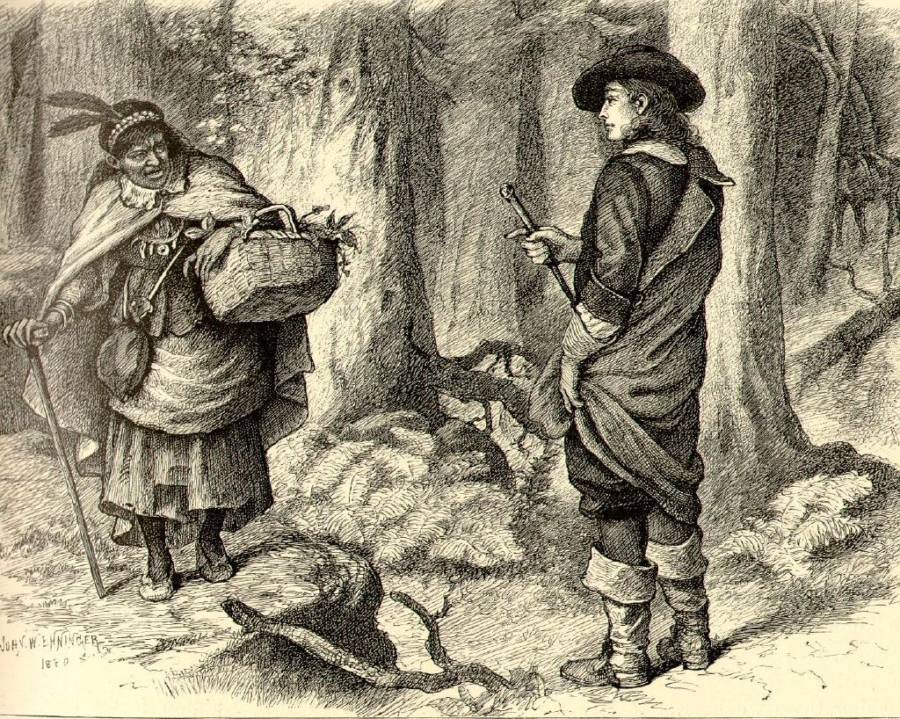
Wikimedia Commons A depiction of Tituba gathering food in the woods. In reality, she was in her late teens or early 20s when the Salem Witch Trials occurred.
Her highly imaginative and coherent testimony in court in which she details her brush with the devil, would organize and set the tone for the witch hunt to come. She would deliver the longest testimony in the Salem Witch Trials, inciting a hunt and ultimately freeing herself from slavery.
Tituba's Life Before the Witch Trials
She was barely in her teens when she came to Massachusetts with two other slaves with Samuel Parris. Parris married in Boston and took a position as the minister of Salem Village in 1689, where he moved Tituba and his family.
Meanwhile, Tituba and Parris's other slave, John who was said to be Native American, allegedly married.
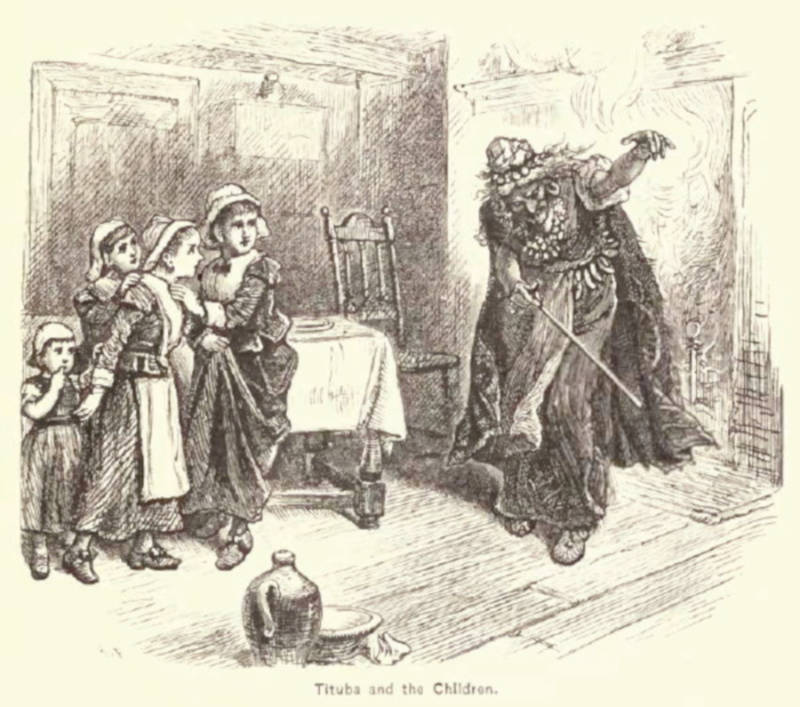
Wikimedia Commons A depiction of Tituba and the children in her care.
It was Tituba's job to take care of Parris's nine-year-old daughter, Betty, to whom she became particularly close to. She also took care of Parris's niece Abigail Williams, who was 11-years-old.
The Salem Witch Trials Begin
In early 1692, several people in the village began to have fits and convulsions. Betty Parris was the first, followed by her cousin, Abigail. Symptoms spread and became more pronounced. Some people complained of bites and pinches.
Friends of the Parris girls, Ann Putnam and Elizabeth Hubbard, complained of visions and hallucinations. Doctors could not find anything medically wrong with any of these four girls and so they suggested a supernatural cause. One of the girls admitted to fortunetelling, so the hunt was on for who bewitched these poor white girls.
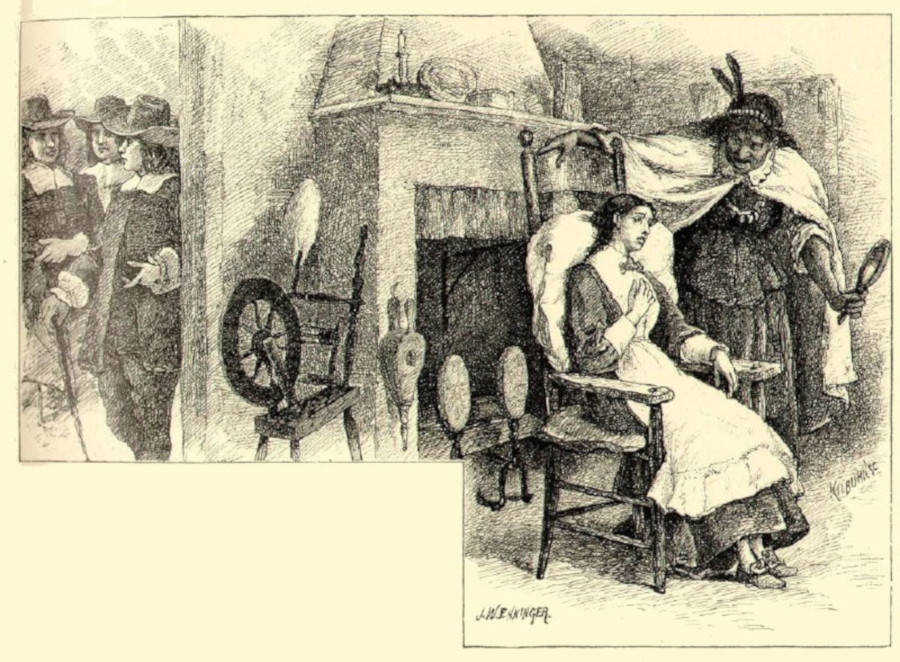
Wikimedia Commons Rendering of Tituba betwitching a child with her devilish tactics.
Tituba was one of three women who were the first to be blamed for the spread of witchcraft in Salem. After all, the slave girl spent most of her time around Betty Parris. She was accused of voodoo and of baking a "witch cake" to reveal the Parris girls fatal fortunes in egg yolks.
Tituba had prayed with the Parris family, took meals with them, and served them their meals.
The four girls also accused Sarah Good, a mentally ill woman who was destitute, and Sarah Osborn, an old widow who had frequent disputes with the Parris family.
On March 1, 1692, Tituba and the other two women appeared before a court. They were to answer to the charges of witchcraft. The two accused white women flatly denied their charges.
But Tituba did not. "The devil came to me and bid me serve him," she confessed.
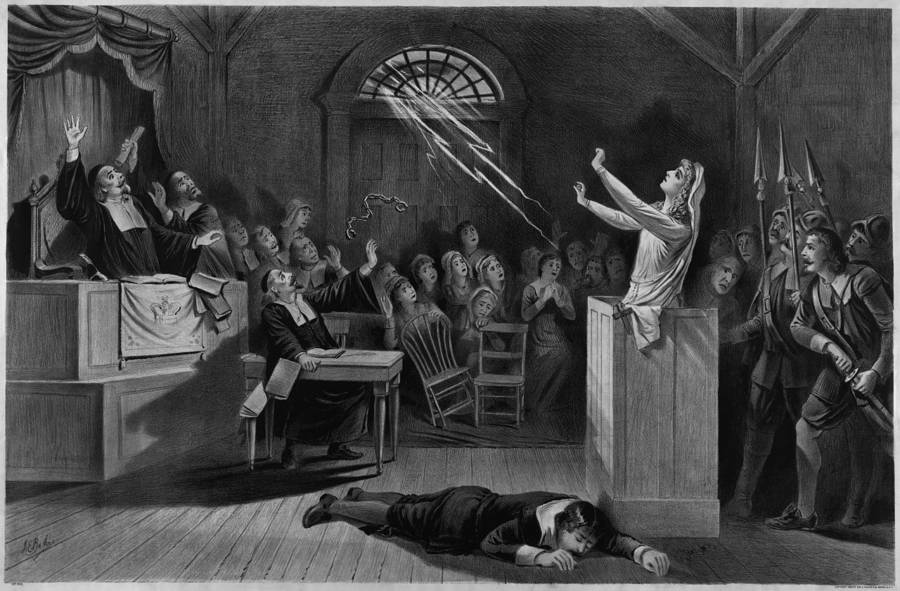
Wikimedia Commons The Salem Witch Trials.
She had an uncanny and thorough report regarding her brush with the devil. Her account was so exhaustive in its oddity and horror that the citizens of Salem believed Tituba.
She spun a sordid and detailed account about how a tall, white-haired man in a dark coat ordered her to hurt the children. If she did not, he threatened, then she would die. She then implicated his devious animal minions: a huge black dog, a hog, a black cat, a red cat, a yellow bird and even an unknown hairy creature who all walked on two legs.
She went so far as to include her fellow suspects. As soon as she did this, the people of Salem wanted to root out the evil in Salem. They wanted more names beyond these two women.
Justice John Hathorne, therefore, asked Tituba if she had seen the devil's book filled with the names of those he willed to do his bidding.
The devil, Tituba said, wouldn't let her see the book yet. "No, he no let me see, but he tell me I should see them the next time."
She claimed not to know who else was under the spell of witchcraft, however, there were "some in Boston and some here in this town, but he would not tell me who they were."
Tituba was choosy where she gave detail, but with reason. She took no issue with describing the devil but was hesitant and vague to name others, real suspects.
In moments like this, Tituba feigned blindness.
Her withholding made her an even more valuable source of information to the terrified people of Salem. They needed her to point fingers, give explanations, and save their town.
What Really Happened to Tituba?
When the Salem Witch Hunt began, three women stood accused: The two white Sarah's and Tituba. By the fall of 1692, up to 185 witches and wizards had been named.
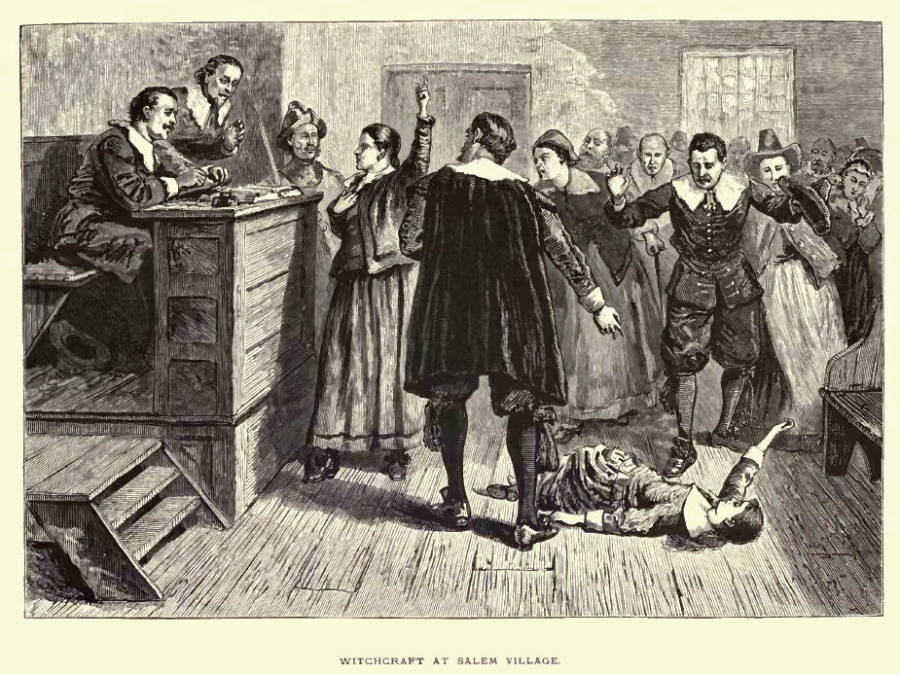
Wikimedia Commons Another depiction of the Salem Witch Trials.
Several of the accused suffered torture, drowning, crushing by stones and hanging. In all, Salem's authorities executed 19 people and imprisoned 150 during the Salem witch trials.
But Tituba was only imprisoned. Tituba's confession proved too valuable.
Modern scholars believe that the fits and hallucinations the Parris girls suffered from were due to contaminated rye flour rather than witchcraft. Since doctors in the late 1600s had no clue about microbial contamination, they turned to a supernatural explanation for symptoms.
As for Tituba, she got out of prison and left Salem with her husband, John. They were never heard from again.
Even though the real Tituba disappeared, her legacy lives on in fictional accounts. In modern times, Tituba appears in the 2013 WGN series called Salem, and descendants of Tituba show up in the popular series American Horror Story: Coven.
Historians believe Tituba confessed to witchcraft and implicated others as revenge against Samuel Parris for being his slave. She protected her own interests by playing on the fears of the Puritans and their religious fervor. In so doing, Tituba was able to manipulate an entire village to set herself free.
After learning about Tituba, read up on the historical origins of the witch or delve into the grisly
Source: https://allthatsinteresting.com/tituba
0 Response to "As They Continue Questioning Her Tituba Admits That There Were People Who Came With the Deil"
Post a Comment